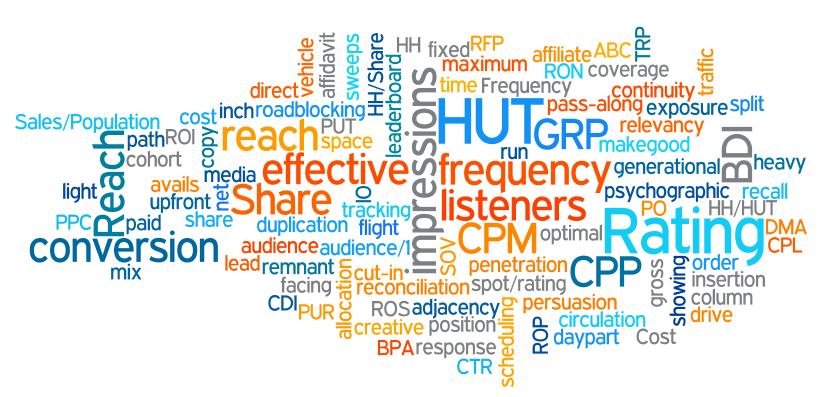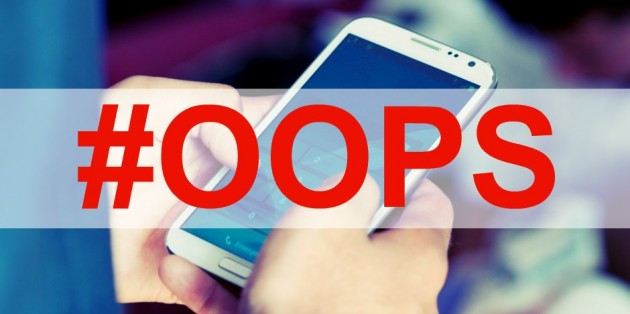February 9, 2015
One of our biggest media buying advantages that we bring clients is our media-side expertise. We’ve been on the “selling ads” side for a long time and we know the Jewish media landscape, structure, pricing and flexibility extremely well.
You may still think, however, why can’t I negotiate, place and track my advertising myself? Well, the primary answer is this: it’s free. Totally free. Media buyers make money on commission. So if you can get an experienced marketing agent on your team for free, do you need any more reason than that? Well, we’ll give you six more + a case study.
Case Study: 40% Savings on Media
Here’s a media buying case study that illustrates the benefits of saving money on media. We saved a client nearly 40% on their media by eliminating redundant spending and narrowing in on stronger local audiences. But we weren’t done there. That extra savings was reinvested in in-store signage, email marketing, social contest and product design – which is all marketing, by the way – and resulted in a direct, measurable increase in sales. When working with a marketing agency, the value of a media buyer doesn’t merely translate into saving on media; the marketing ripple effect and cost-savings helps your entire overall business in the long run!
Now that we’re done tooting our horn a bit, here’s five more reasons why you need a media buyer.
We translate terms like “largest”, “biggest” and “fastest-growing”.
Ever heard terms such as “fastest-growing”, “biggest in town”, “strongest readership”, “added value” and “thousands of visitors online”? I call those terms QueV, because the’yre Questionably Upbeat Extremely Vague media terms (sounds like queasy, right?). How does one measure a “fast-growing” magazine? By their ad pages, by their readership, by their staff, by their presence? Vague, right? Well, it helps them sell ad space. Our job is to decipher those QueV terms by putting hard data behind it to back up – or refute – their product claims. One Jewish media outlet I know of sold a digital ad package to a Fortune 500 client with a promise of 1 million online impressions by years end. The Fortune 500 client’s ads missed those benchmarks badly because the Jewish media outlet’s site wasn’t nearly trafficked as much as they claimed. Needless to say, the client thought twice about buying again. Avoid getting sold by QueV terms and let a media buyer sort it out for you.
We are the Ad Sales Gatekeeper.
The first calls – and sometimes the only calls – you’ll get from your first couple ads will be from ad salespeople. You may have thought you were smart about your advertising but their sales call will make you question your entire strategy. Five minutes later, you’ve committed to an extra $3,000 ad buy and a winner of a “fantastic deal”. With a media buyer in place, you won’t doubt yourself or place ads frivolously because you’ll have an expert on board from the start. Media buyers will take those sales calls, research their media kits, and advise you if the media is a good investment or not. Chances are, if you started with a media buyer, that cold-calling media outlet would have been on the roster. We’ll ensure you don’t second guess yourself. You get the business calls, we’ll take the cold-calling ones.
We’re media agnostic.
We never fall in love with one media outlet. A lot of your advertising will be spent on publications and websites that you simply read, visit and frequent all the time. You love that magazine so you’re going to spend money with it and, hopefully, it will show you equally how much it loves you! A lot of money will be spent on that love and you may see some returns… or you may see your love unrequited. We don’t fall in love with media outlets; each one serves a purpose and it may or may not be suitable for your brand. One of our clients loved reading a certain newspaper cover to cover and believed their customers loved them equally for their big ad in said paper every week. The resulting sales, however, didn’t show them the love nor the money. We were called in to help “save the marriage” or ensure an “amicable breakup”. We broke them up, restructured their ad buys and our client came out on top. Don’t worry, we sent a fruit basket.
We know more than just pricing.
Remember that time you negotiated a great price on your ad but you got put on page 95 because you weren’t “spending enough”? I dealt with a client who had some stiff requirements about their ads – they needed right hand page, far forward, only ad on the page and not across from a competitor. At least they backed it up with dollars. There’s more to media buying than just price… but everything is negotiable. Prices on the rate card are never what they seem but there is more to it than just prices. Companies like yours only lose out on the best pricing, value and placements because you may be 1) unaware of your options 2) you need to place the ad ASAP, losing all leverage 3) you aren’t as consistent an advertiser as you should be or 3) simply didn’t do your homework. As media buyers, we dedicate the time and strength focusing on the tangibles like price, and the intangibles, like value and placement. We know how to play one media outlet off another to yield the best rates overall. We know deadlines. We know remnant space. We know page placement. Bottom line, having been on the media sales side for so long, we know everything that goes into buying great advertising and it’s not only about price.
We’re the Walmarts of Ad Buying.
You may call a magazine and get an average price with little wiggle room. When a media buyer calls a media company on your behalf, we represent more than just one company. We represent a portfolio of advertising clients so our purchasing power is better. It’s in the sales reps best interest to give media buyers unique pricing because we can bring in more clients for him. Just like Walmart outprices everyone in the retail industry with their huge buying power, media buyers have client rosters that yield better rates for every client.
We make you look smart.
Discovering ways to reduce spending without impacting your bottom line is one of the smartest things you can ever do. If you went to your boss or your board and proclaimed that you’ve found a way to cut your advertising costs by a third, you would look pretty smart in their eyes. If we helped you discover a way to reduce your spending without sacrificing advertising, you’d feel like the smartest CEO in town. You instantly seem smarter when you bring in the experts to help you plan, budget, and strategize your ad spending. By adding a media buying team to your business, your media reps will now look at you and say “Ok, this company is getting smarter about their advertising. We can’t play games.” Before, according to them, you weren’t as strategic as before; now, you’re smarter about it. So why wait for a business downturn to get smart about advertising? By adding a media buying team to your roster, you’ll be better prepared for a downturn, your advertising costs will already have been reduced and the funds you’ve saved can now be used to grab market share hand over fist. That’s pretty smart.
Myth: Because they get commission, Media Buyers are disincentivized to get clients low rates.
Ok, I see your point. Yes, if you’re dealing with a dedicated media buyer, who ONLY places ads on your behalf and his ONLY service to you is an ad price negotiator and ONLY makes money on commissions, then you should question the value his services bring to the table. But take a marketing agency like Henry Isaacs Marketing (horn tooting alert!); media buying is only ONE of many marketing strategy & advertising services we provide. A smart business needs creative design, integrated marketing strategy, cost-effective advertising and strong branding so our incentive is not simply ad commissions; our goal is to be your dedicated marketing strategist. Remember that case study from above? Our client saved money and we made money on the extra design & marketing work. We partner with you on all your marketing, not simply advertising, so our incentives are entirely aligned.
Media buying is the smartest way to start any advertising planning. It’s free, it’s strategic, it’s negotiable and it helps free up cash to use in many more exciting ways.






